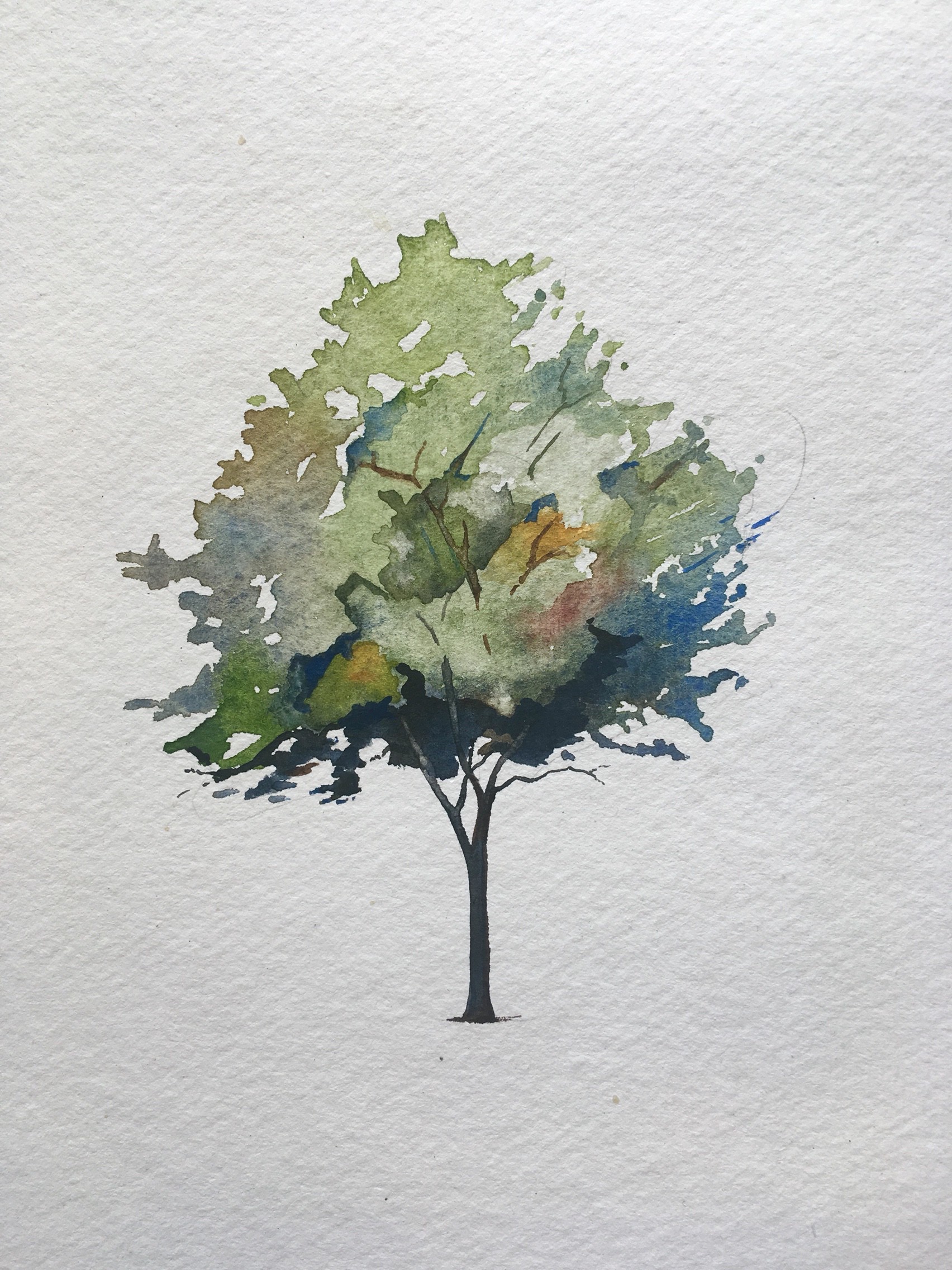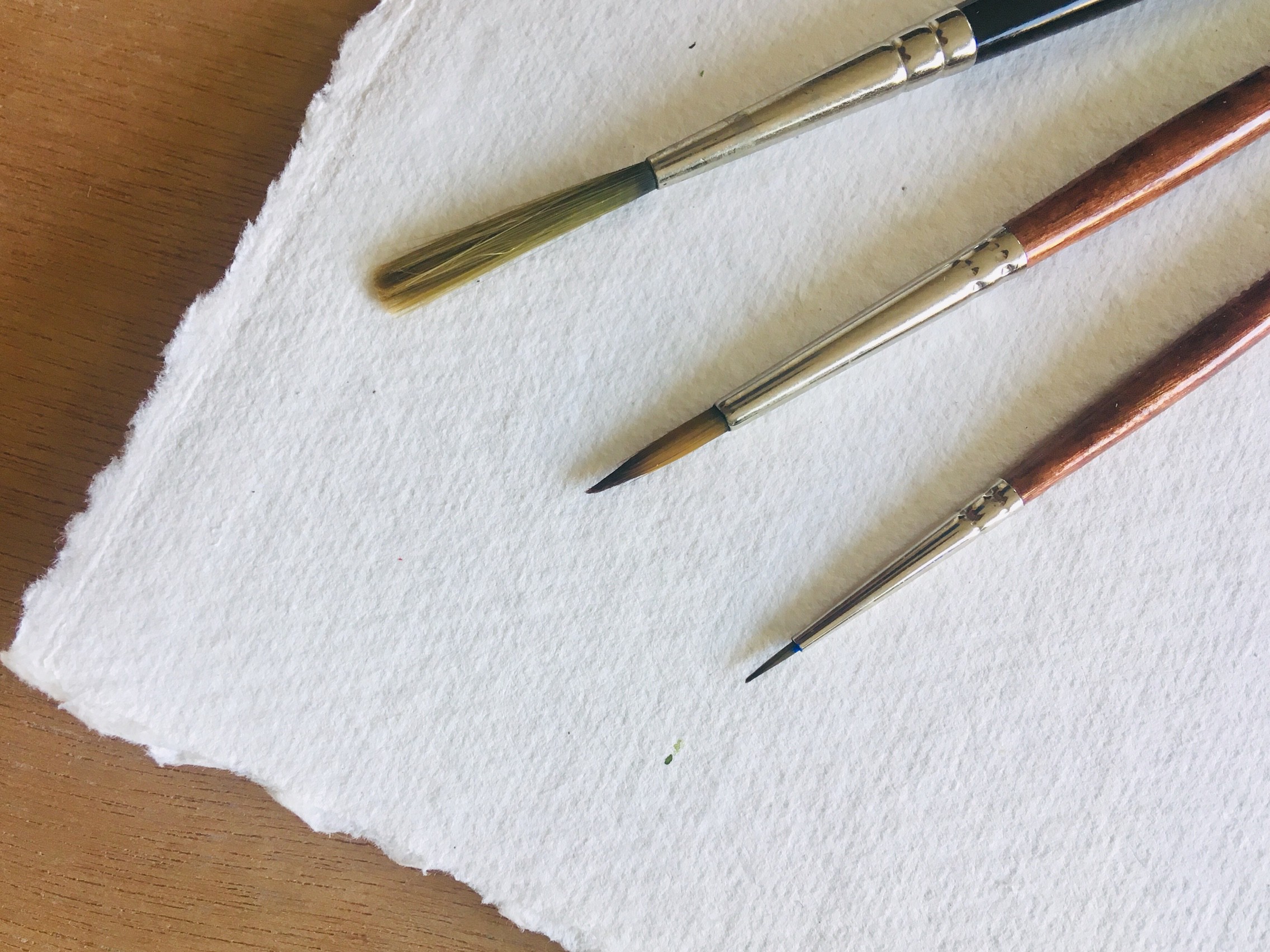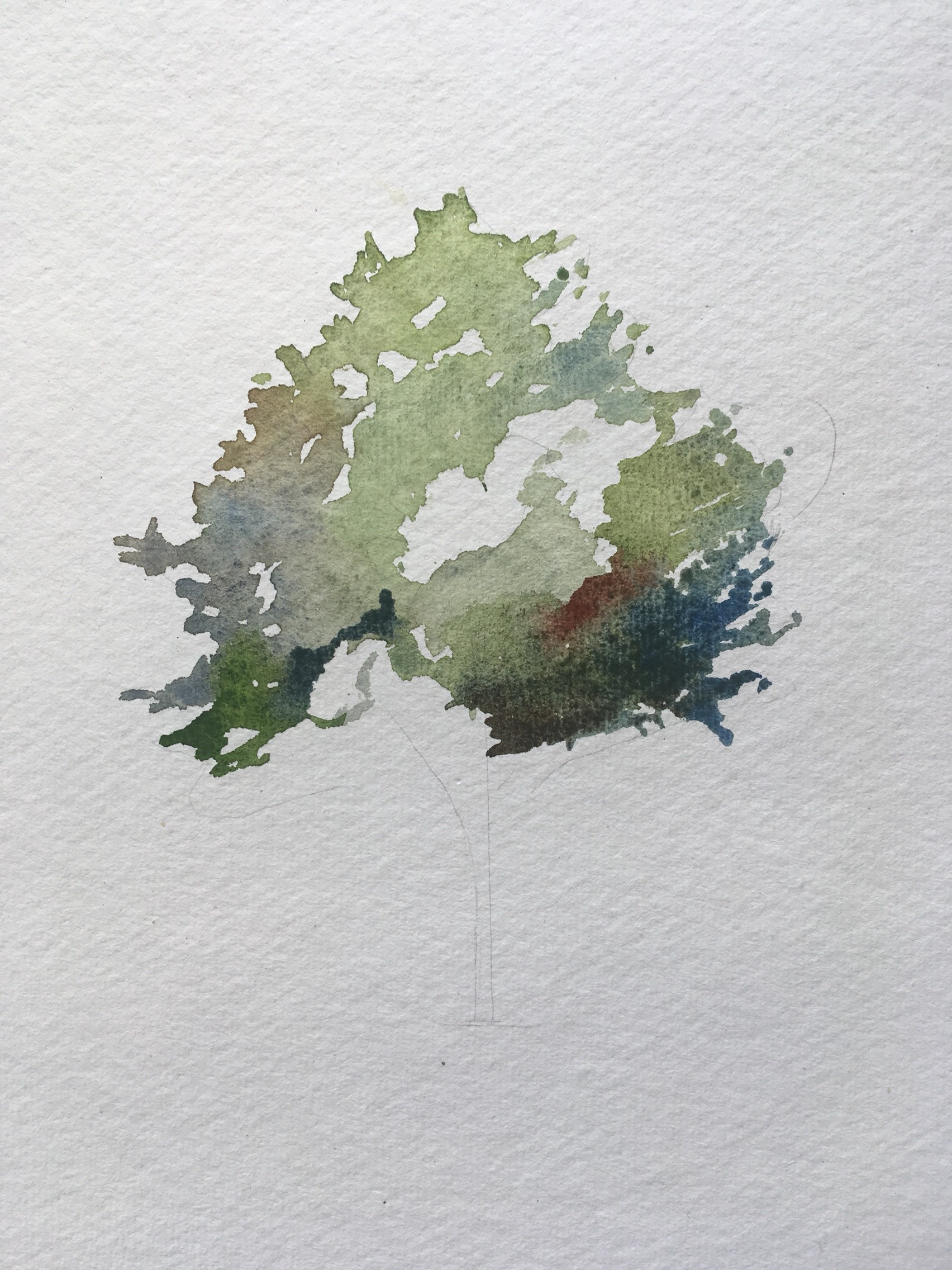Another step-by-step guide to painting trees

The beauty of watercolors is truly in the impressionistic effect that they create. The paint goes on quickly ? which is how to get the best out of watercolor ? and so the hand and eye can work in happy unison.
For this painting I used:
640gsm cotton rag paper: This is a fairly heavy paper that doesn?t crinkle when wet. That?s my preference. Anything above 300gsm should be good.
3 brushes of varying size (see photo below)
Watercolor paints: chromium green, yellow ochre, ultramarine blue, burnt umber brown.

One of the most important aspects of watercolour is in deciding where the areas of light and dark will fall within the painting. A simple rule-of-thumb is to paint the lightest areas first, gradually moving to the darker zones as your color palette deepens. Painting over watercolor is only really possible with shades that are darker than those already on the paper, so it makes sense to begin light and go darker.
With this tree, I lightly sketched the outline of the subject in pencil before painting in the outermost areas of the tree foliage, blending several colors as I went to create a more varied surface.


The more I use watercolor paints, the more I am convinced of the benefits of painting briskly. This includes not worrying too much about details but working towards a more general feel of shape and color tones.
In this way, I?ve painted this tree with a purposefully loose brush, picking up different colors and letting them blend together: greens into browns, blues into yellows.


As the form of the tree is gradually painted in, the colors should naturally darken and grow heavier to develop shade at the lower reaches of the foliage.
Details should still be minimal at this point: spend your energies on painting in the array of colors, letting your brush fill with paint and committing it to the paper with a generous spirit. Don?t be afraid to let the paint ?spill? out from your brush a little, since happy-accidents can add life to a painting.

Only in the final stages should the finer details be added. I painted the tree trunk first, then worked up to the visible branches that slowly taper as they reach upwards.
Add a few hints of branches within the foliage too, whilst resisting the temptation to overwork the image with too many fiddly elements.
Work in some leaf details beneath the main body of the tree and add a few areas of darker paint to the foliage to suggest depth. Keep it simple and don?t overwork the painting. The elegance of an effective watercolor is knowing when to stop, so the final image has space to breathe.
Christopher P Jones writes about culture, art and life. Sign up for more.


